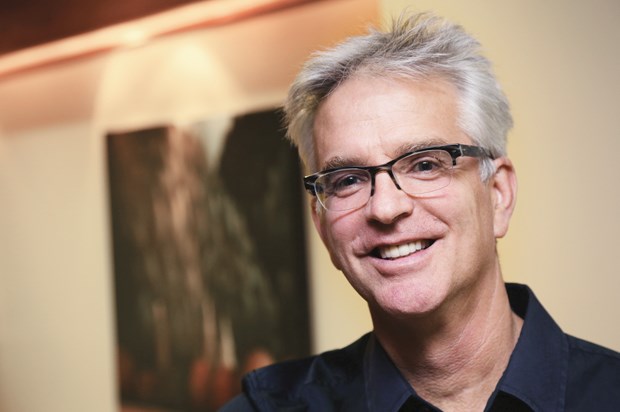Strolling down the hall known as the "art walk," one might never guess they were in a health care facility.
From watercolour landscapes to photographs and floral oil paintings, walking the corridors of Lions Gate Hospital and its neighbouring buildings has a new, more calming feel.
The Lions Gate Hospital Foundation's art program has been bringing artwork into the halls of the hospital, Evergreen House and North Shore Hospice for almost two years, and will soon be adorning the walls of the new HOpe Centre this fall.
Joanne McLellan, director of planned giving at Lions Gate Hospital Foundation, says the program was patterned after one at Vancouver General Hospital.
"The whole idea was that by making the environment in a hospital more beautiful with different kinds of art - right now we've got mostly paintings and photographs, but hopefully we'll get other different kinds of art as we go forward - it just gives patients and visitors and staff a bit of a diversion in an often very stressful situation," says McLellan.
The program was launched about two years ago, with help from VGH, on the basis of the HOpe Centre, she says. The new North Vancouver psychiatry and education facility is expected to be fully operational mid-November.
"It was going to be a brand new building, beautiful architecture, that needed some beautiful artwork," says McLellan. "So we launched the program on the basis that we would be looking for art for the HOpe Centre but in the meantime it would be housed at Lions Gate."
The foundation currently has approximately 80 original pieces throughout the hospital.
"It was really all about the healing power of art," says McLellan. "It was a way of creating a calming and attractive environment that if someone was having a bad day, whether it was staff or a patient or family member or visitor, it just gave them a different perspective for even just a short time."
Some of the artwork will be moved to the HOpe Centre, she says.
"The idea is to continue to expand the program so that all areas of all of the facilities have access to the art," says McLellan.
The pieces are chosen by an art committee made up of art professionals, medical staff and a couple of board members, she says, as well as psychiatric medical staff for anything going into the HOpe Centre. Artists submit an image electronically and all the pieces are juried.
"Generally there's a certain criteria that there are some things that are not acceptable for a health care setting," says McLellan. "Those are eliminated with an explanation to the artist that this is why it's not acceptable."
The committee tries to keep a balance so they don't end up with all landscapes or all flowers, she says, so they have a comprehensive mix of different subjects in the artwork.
The feedback from patients, visitors and staff has been "fantastic," says McLellan, remembering one particular incident when the first pieces were being installed around a year and a half ago.
"We had cords running across the hallway to the drill and the vacuum and so on," she says. "So I was standing there with my name tag on, sounding like a traffic officer
saying 'watch your step, watch your step,' thinking the last thing I need is the first pieces of art that go out and somebody trips over the cord."
An elderly woman approached McLellan and asked if she was involved in the art program.
"I said 'yes,' and she said 'well, I have to tell you, I live over on the 13th Street side of the hospital and my husband is in Evergreen and I walk through the hospital at least twice, often more every day, and every time I leave him, I cry on my way home,'" McLellan recalls.
The woman then told McLellan that it was the first time she was able to enjoy the walk home.
"I was almost in tears and I thought 'whoa, this really does make a difference,'" she says. "It's having that kind of an impact."
The response from the artists has also been very positive. "They've been really pleased," says McLellan. "Most of the artists we've had so far are from the North Shore or the donors are from the North Shore, so it's their community hospital."
There are approximately 50 artists that have contributed their work,
including Ross Penhall, Bobbie Burgers and Cori Creed. "It's a way for their work to be shown, although in most cases they're pretty well-known artists so they don't necessarily need the exposure from us, but they're happy to have their work here and they're happy to be a part of the collection with the other artists that we have here," says McLellan. "The collection, as it grows, is becoming more well known, so people want to be involved."
The foundation already has plans in the works to expand the collection to include sculptures and three-dimensional art. "I think many people have this fear of hospitals, for all sorts of reasons, and usually the old story about 'well it smells like a hospital and it's a very clinical environment and everything's pretty sterile looking,' and I think the art sort of softens that," says McLellan. "It brings the outside world into the hospital to sort of make it more of a welcoming environment. It gives you a minute to put life in perspective and gives you a bit of a diversion from what's often a very stressful situation."



